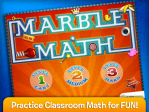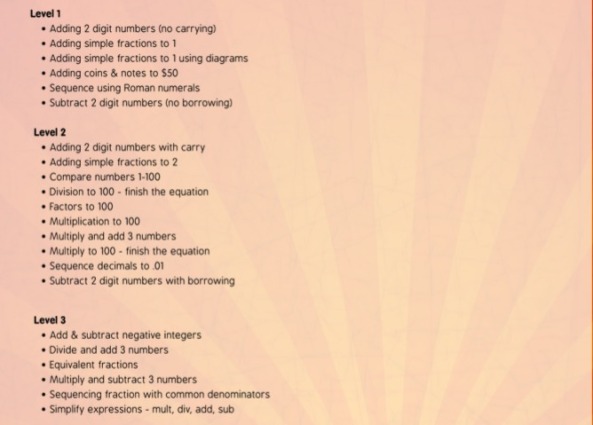Mystery Math Town
by Artgig Apps
Some might be wondering where did Applicable2U go since the summer time. Yes, I have been “ed app missing in action” but have made a brief return for my friends at Artgig Apps. Over the last few months, Artgig Apps has been busy and certainly making their mark in the app world. If you aren’t familiar with Artgig Apps, they are known for Shake-A-Phrase, Alien Buddies, Marble Math and Marble Math Jr. Recently, Common Sense Media and CTR (Children’s Technology Review) awarded Marble Math and Marble Math Jr. for excellence in design and “must have” apps on your device. Today the celebration continues as they launch in the App Store, Mystery Math Town. Mystery Math Town is intended to be used with children ages 6-12 years old. In order to visit this mysterious town, users must have an iPad device running iOS 5 or later. It’s perfect for home and school usage as it allows for multiple accounts and customization of user skills while meeting grade level Common Core State Standards. While on this island, players will use their mathematical knowledge of addition, subtraction and multiplication in order to unlock rooms, windows and secret passage ways. Your child(ren) will be completely engaged from the very beginning as they create their own quirky avatar. If any of my readers have been to Walt Disney World, Magic Kingdom lately, you may have noticed a new technical integration of talking paintings that guide you through the park in order to solve a mystery. While exploring Mystery Math Town on my device this memory of Magic Kingdom came to mind as I opened doors, zipped down stairs and interacted with talking paintings or animated objects within each room while doing math. Learn to build numerical sentences and fact families with numbers, dice, and tally marks. With a clean and easy to navigate design, users will be developing strategies and building their critical thinking skills along the way.
Before your mystery can begin, users will not want to miss the chance to design their own avatar, swipe through a variety choices. What type of hat/hair, eyes or mouth will your child(ren) choose? Once created, no avatar is set in stone, it can be altered at anytime. Differentiate a players experience by selecting those skills that will be incorporated during their mystery.
- Addition: 0-10, 11-20, or 21-50
- Subtraction: 0-10, 11-20, or 21-50
- Multiplication: x1, x2, x5, x10 or x1-x10
- Types of numbers to include dice and tallies
Off the shores of this island are 8 homes and your goal is to help an adorable ghost find a total of 50 firefly friends that have been trapped in jars. Homes provide users with a large library of mathematical questions. Once through the front door, the direction you go next will depend on the numbers you store. Users will need to keep in mind that their storage meter will only hold 8 numbers, this is where strategy comes in. Use the numbers collected to build fluency of addition, subtraction and multiplication as you go through windows, up/down stairs or through doorways. If along the way your child is unsure of how to solve, use a lifeline, but use them wisely, they are only given three. Mystery Math Town is equipped with a number of bonus features or positive reinforcements, a collection of talking paintings (ie. Ms. Maps, Shirley MacStroodle and FlapJack) and a treasure chest of coins. Applicable2U actually found themselves going around in circles at times, had I made good numerical choices? If not, how should I solve. With some many schools talking about Common Core State Standards, a number of standards came to mind through exploration. For example,
- CCSS.Math.Content.1.OA.C.6 Add and subtract within 20, demonstrating fluency for addition and subtraction within 10. Use strategies such as counting on; making ten (e.g., 8 + 6 = 8 + 2 + 4 = 10 + 4 = 14); decomposing a number leading to a ten (e.g., 13 – 4 = 13 – 3 – 1 = 10 – 1 = 9); using the relationship between addition and subtraction (e.g., knowing that 8 + 4 = 12, one knows 12 – 8 = 4); and creating equivalent but easier or known sums (e.g., adding 6 + 7 by creating the known equivalent 6 + 6 + 1 = 12 + 1 = 13).
- CCSS.Math.Content.1.OA.D.8 Determine the unknown whole number in an addition or subtraction equation relating three whole numbers. For example, determine the unknown number that makes the equation true in each of the equations 8 + ? = 11, 5 = _ – 3, 6 + 6 = _.





